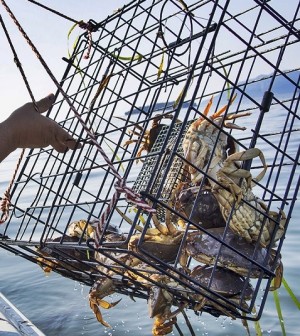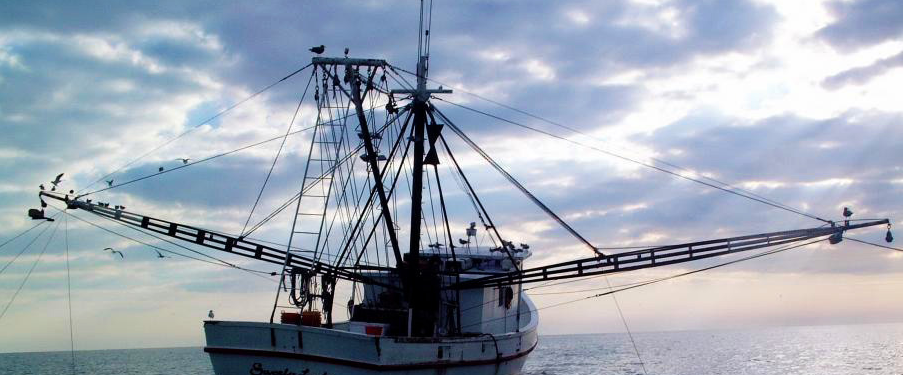Most of Puget Sound Reopens to Crabbing
Each week we round-up the top fishing news from the Northwest and beyond. Do you have a news tip? E-mail us at news /at/ salmonuniversity.com.
Puget Sound Reopens to Recreational Crabbing
 Most marine areas of Puget Sound will reopen to recreational crabbing at 8:00 a.m. on October 1, according to the Washington Department of Fish and Wildlife (WDFW). Crabbing in the newly reopened areas will be allowed daily through the end of the year and opening areas include: Marine Area 4 (Neah Bay, east of the Tatoosh-Bonilla line), Marine Area 5 (Sekiu), Marine Area 6 (the eastern Strait of Juan de Fuca), Marine Area 7 (San Juan Islands), Marine Area 8.1 (Deception Pass, Hope Island, and Skagit Bay), Marine Area 8.2 (Port Susan and Port Gardner), Marine Area 9 (Admirality Inlet), Marine Area 11 (Tacoma-Vashon Island), Marine Area 12 (Hood Canal), and Marine Area 13 (South Puget Sound).
Most marine areas of Puget Sound will reopen to recreational crabbing at 8:00 a.m. on October 1, according to the Washington Department of Fish and Wildlife (WDFW). Crabbing in the newly reopened areas will be allowed daily through the end of the year and opening areas include: Marine Area 4 (Neah Bay, east of the Tatoosh-Bonilla line), Marine Area 5 (Sekiu), Marine Area 6 (the eastern Strait of Juan de Fuca), Marine Area 7 (San Juan Islands), Marine Area 8.1 (Deception Pass, Hope Island, and Skagit Bay), Marine Area 8.2 (Port Susan and Port Gardner), Marine Area 9 (Admirality Inlet), Marine Area 11 (Tacoma-Vashon Island), Marine Area 12 (Hood Canal), and Marine Area 13 (South Puget Sound).
The daily catch limit in Puget Sound is five Dungeness crab (males only) in hard-shell condition with a minimum carapace width of 6.25 inches. Additionally, crabbers may take six red rock crab of either sex per day, provided those crab measure at least 5-inches across.
Upcoming Public Forums to Help Guide Future of Washington Fisheries
Jim Unsworth, the new director of the Washington Department of Fish and Wildlife (WDFW), recently announced a new public initiative — Washington’s Wild Future: A partnership for Fish and Wildlife — to help determine WDFW’s priorities for conserving and managing Washington’s fish and wildlife for decades to come. The information received through six regional public forums and comments will help guide where WDFW focuses its efforts, funding, and the development of future policy, budget, and license fee proposals. Upcoming forums include:
- Sept. 30 – Center Place, 2426 N. Discovery Place, Spokane Valley.
- Oct. 6 – WDFW Mill Creek Office, 16018 Mill Creek Blvd, Mill Creek.
- Oct. 8 – Saint Martin’s University, Norman Worthington Conference Center, 5300 Pacific Ave. SE, Lacey.
- Oct. 14 – Water Resources Education Center, 4600 SE Columbia Way, Vancouver.
- Oct. 20 – Port of Chelan County Confluence Technology Center, 285 Technology Center Way, Wenatchee.
Alternatively, anglers can submit comments online by clicking here or via email at wildfuture@dfw.wa.gov. WDFW will be accepting public comments through October 31.
According to the Coastal Conservation Association of Washington (CCA-W), it has been working with WDFW and elected officials to promote policies that improve the conservation of fisheries and prioritize recreational fisheries. Specific CCA-W objectives include ending the non-selective overhavest of fisheries, prioritizing the economic and license fee revenue benefits of sport fisheries (according to CCA-W, recreational anglers generate more than $35 million in annual license fees and excise taxes, 8.5-times more than commercial fisheries), and growing public confidence in the WDFW by improving what the CCA-W characterizes as the “broken system of state/tribal co-management through the North of Falcon process.”
Commercial Bycatch Second-Largest Source of Seafood Waste

A new study from Johns Hopkins University, to be published in the upcoming (November 2015) issue of the journal Global Environmental Change, found that bycatch from commercial fishing is the second-largest source of seafood waste in the United States. Overall, up to 47-percent of edible seafood in the United States went uneaten in the 2009 to 2013 period, the study reports. Of that amount, as much as 32-percent can be attributed to bycatch discarded by commercial fisheries.
The total volume of wasted seafood is enough to provide the annual caloric intake for 1.5 million adults, according to the Johns Hopkins researchers.






